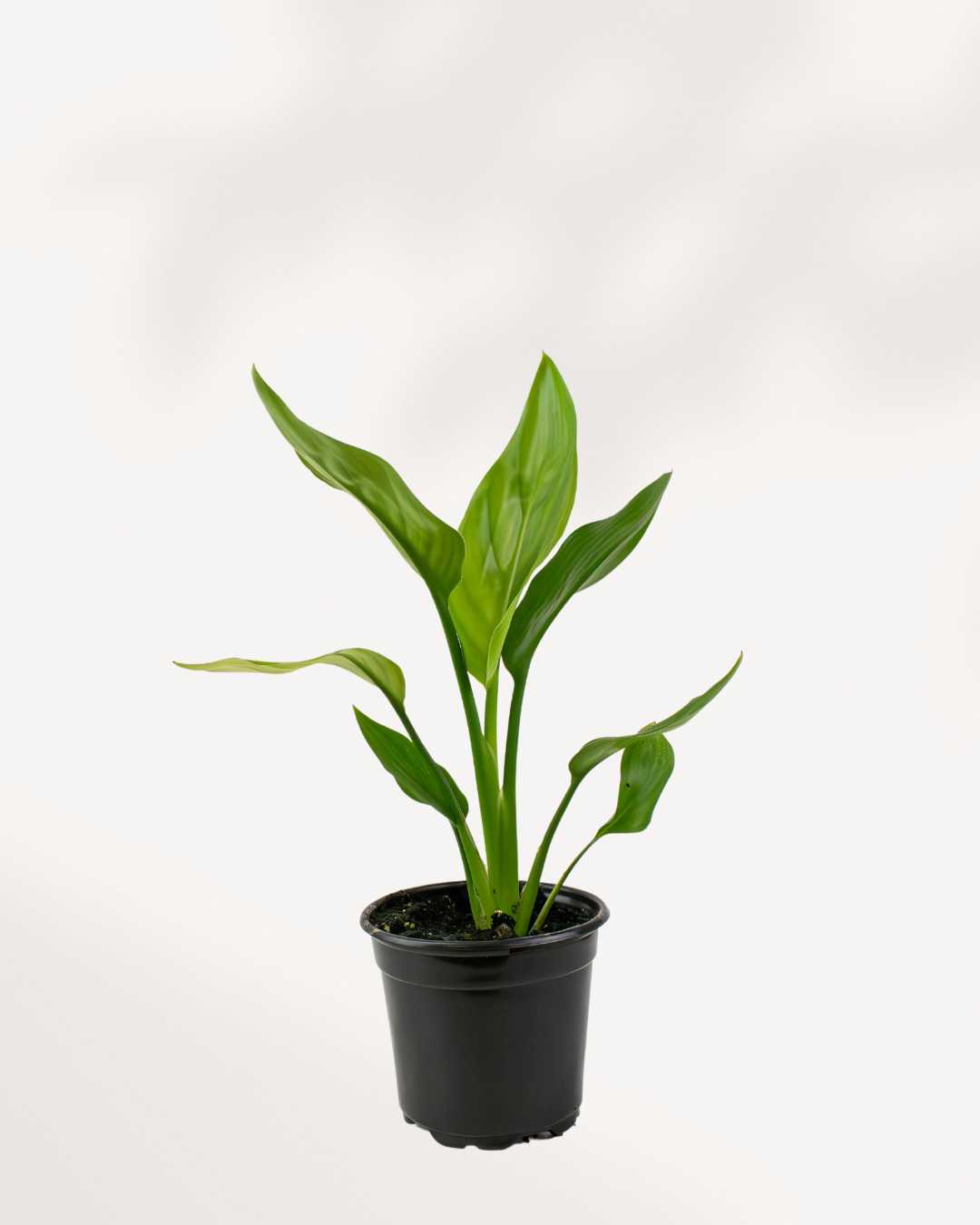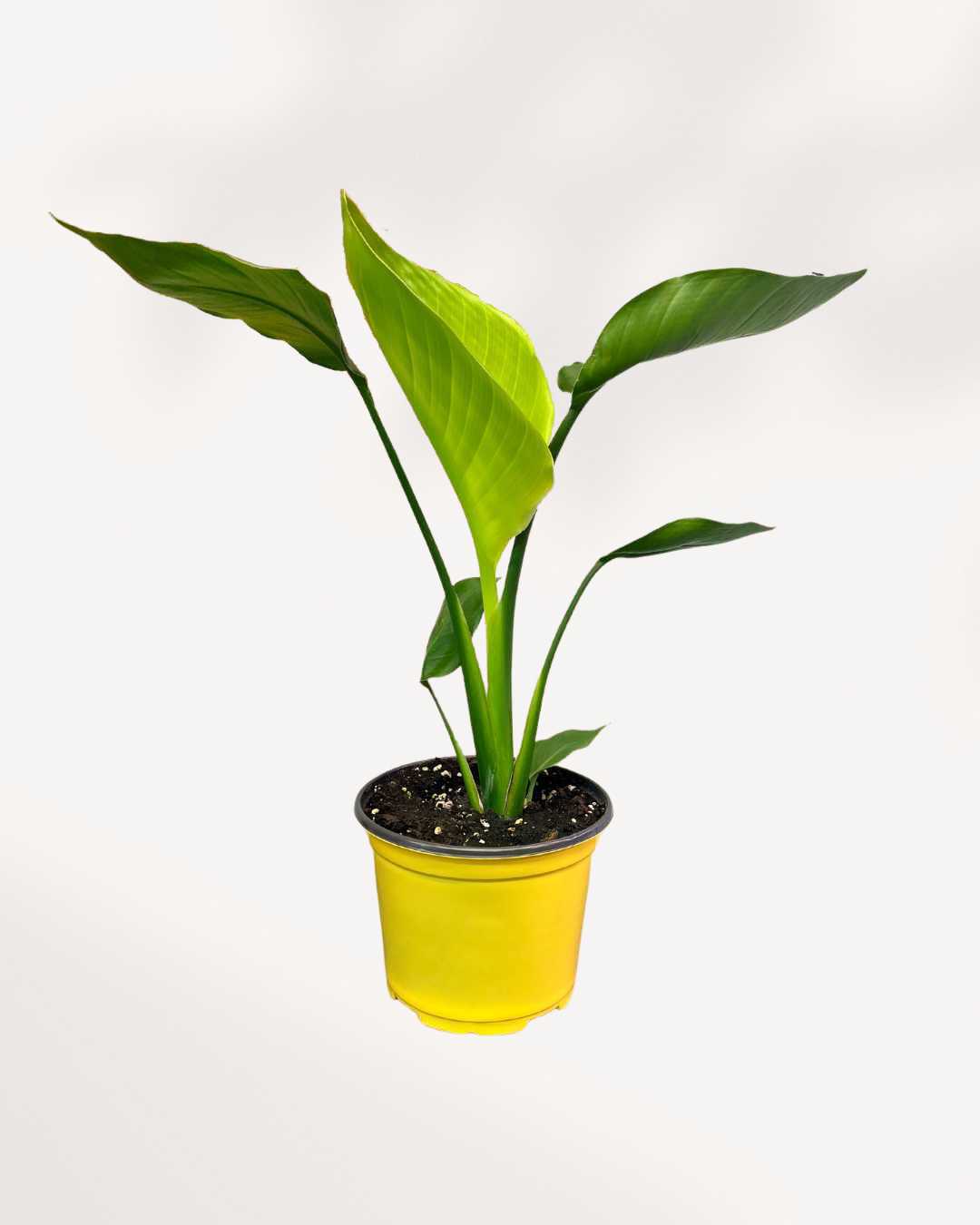Couldn't load pickup availability
Bring the Tropics Home with the Majestic Bird of Paradise – Your Indoor Architectural Masterpiece
Transform any room into a lush, sun-drenched sanctuary with the **Bird of Paradise** (*Strelitzia* species). Known for its massive, glossy, banana-like leaves and towering, upright growth, this plant is the ultimate statement piece for any home. Whether you choose the colossal *S. nicolai* (Giant) or the more compact *S. reginae* (Orange), the Bird of Paradise offers an unparalleled combination of architectural beauty and tropical grandeur. Its elegant, fan-like foliage brings a dramatic, exotic flair that instantly elevates your decor.
Why the Bird of Paradise is the King of Indoor Plants
🌴 **A Dramatic Tropical Statement**
The large, paddle-shaped leaves fan out, creating an impressive, high-impact focal point that defines any living room or office space.
👑 **Architectural Elegance & Height**
With its upright, structural form, this plant adds vertical dimension and a contemporary, clean aesthetic that rivals designer furniture.
☀️ **Loves the Sun (and Will Reward You)**
It thrives on bright light, making it the perfect choice for sunny South or West-facing windows where other plants might struggle.
💚 **Relatively Easy to Maintain**
For such a dramatic plant, it is surprisingly hardy and resilient, forgiving a missed watering and adapting well to indoor conditions.
All the Details You Need to Know
The Story Behind This Plant
Native to the subtropical coastal regions of South Africa, the **Bird of Paradise** belongs to the genus *Strelitzia*. Its common name comes from the spectacular, crane-like flowers of the *Strelitzia reginae* variety, which bear a striking resemblance to the head of a tropical bird. The two most popular indoor varieties are:
- **Strelitzia reginae (Orange Bird of Paradise):** Features vivid orange and blue flowers and typically grows to a manageable 3-6 feet indoors.
- **Strelitzia nicolai (Giant Bird of Paradise):** Known for its towering height (up to 10 feet indoors) and banana-like leaves, it produces white and dark blue/black flowers (though rarely blooming indoors).
The natural splitting of the leaves is a common and normal characteristic, helping the plant withstand high winds in its native habitat.
How to Keep It Happy
The Bird of Paradise is a light-loving plant that will thrive with consistent warmth and plenty of moisture during the growing season. Here are the key care tips:
- **Light:** Requires **very bright light** to thrive, including several hours of direct morning or late afternoon sun. A South or West-facing window is ideal. Lower light conditions will slow growth and reduce the chance of blooming.
- **Water:** Water thoroughly when the top 50% (or 2-3 inches) of the soil is dry. They like consistent moisture, especially in bright light, but absolutely must have good drainage to prevent root rot. Reduce watering significantly in the cooler, darker winter months.
- **Humidity:** Prefers high humidity (50-70%) but is tolerant of average household levels. If leaf edges become crispy, increase humidity with misting, a humidifier, or a pebble tray.
- **Soil:** Use a rich, well-draining potting mix. A tropical blend or a mix of potting soil, perlite, and bark works well.
- **Temperature:** Keep it warm! Ideal temperatures are between 65-85°F (18-30°C). Protect it from cold drafts, which can cause leaf damage.
- **Feeding:** Fertilize regularly every 2-4 weeks during the active growing season (spring and summer) with a balanced liquid fertilizer. Reduce or stop feeding in fall and winter.
Troubleshooting & Common Issues
While generally robust, the Bird of Paradise can exhibit a few common issues, mostly related to light and water balance.
- **Leaf Splitting:** **This is natural!** It's a survival trait from the wild. Low humidity can exacerbate this, but it is not a sign of poor health.
- **Curling Leaves:** Often a sign of **underwatering** or low humidity, as the plant curls its leaves to conserve moisture.
- **Brown/Yellow Edges:** Usually caused by inconsistent watering (either under or overwatering), or sensitivity to salt/mineral buildup from tap water. Try using filtered or distilled water.
- **Pests:** The most common pest is the **Spider Mite**, which thrives in dry air. Inspect leaves regularly and treat promptly with Neem Oil or insecticidal soap. Our Guide
under-Popular Plant Varieties
Explore more dramatic and beautiful plants that our customers love:
-
Ficus Shivereana Moonshine
- Elegant variegated leaves with soft green patterns.
-
Philodendron Pink Princess
- Stunning pink variegated foliage for a colorful indoor accent.
-
Alocasia Silver Dragon
- Silvery leaves with prominent veins, adding a touch of elegance.
-
Artistica Orchid
- Elegant blooms with soft pastel hues for indoor displays.
Ready to Bring Tropical Grandeur to Your Space?
Add the sophisticated charm and striking size of the Bird of Paradise to your collection. Click below to order yours and cultivate a piece of living sculpture today!
How to take care of Bird Of Paradise
Sun: Direct & Indirect
Sun: Direct & Indirect
Light: Bright
Light: Bright
Water: When half dry
Water: When half dry
Humidity: Medium
Humidity: Medium
Pet Friendly: Caution
Pet Friendly: Caution
Pro Tip
Pro Tip
Delivery Policy for Plant Condition
Delivery Policy for Plant Condition
"I have only received part of my order. What to do?
No worries if you've only got part of your order! Our plants come from different nurseries and might arrive in separate shipments, typically 1-2 days apart. It's all part of ensuring your green friends reach you in top-notch condition!
If you do not receive the remaining packages within 48 hours contact support at info@mygreenscape.ca
What is the Life Time Support?
Absolutely! Lifetime support means you can count on us whenever you have questions or uncertainties about your plant. Whether you're puzzled by its behavior or just want to ensure it's thriving, we're here for you. Connect with us on Instagram @mygreenscapeto or shoot us an email at support@mygreenscape.ca.
When it comes to our guarantee for plants shipped with standard or express, rest assured that we offer a 30-day happy healthy plant guarantee on all such shipments. This ensures that your plants are covered for 30 days after delivery, giving you peace of mind regarding their condition. If you have any concerns within this period, feel free to reach out to us for assistance.
For further details, please visit our Local Delivery, Store Pickup, Standard Shipping Guide Page.
What to expect
What to expect
Your plant will arrive in a standard nursery pot, typically 0.5" - 1" smaller than the stated size to seamlessly fit into your chosen decorative pot. Washable Paper Planter Bags are available for separate purchase.
Just like nature intended, each plant is unique, showcasing natural variations in size, shape, and characteristics. Our commitment is to deliver a plant that closely resembles the one featured on our website, matching your chosen size, and with the potential to thrive happily in your home.
Frequently Asked Questions
Frequently Asked Questions
Certainly! If you're pondering about ordering plants online, you're not alone. We've compiled the most frequently asked questions. Check out our FAQ section here for quick answers! Happy planting!
Plant & Pot Size Chart
Plant & Pot Size Chart
Choosing the right pot size for your plants can be a daunting task, especially if you're new to gardening. But fear not! Our pot sizes chart can help you find the perfect match for your plants, ensuring they have enough space to grow and thrive. With our guide, you'll be able to confidently choose the right pot size and plant variety for your gardening needs.
Plant Pot Size Guide.

| Extra Small | 7-10 cm | 2.5 - 3 inches |
| Small | 11-12 cm | 3.5 - 4 inches |
| Medium | 14-17 cm | 5 - 6 inches |
| Large | 19-21 cm | 8 - 10 inches |
| Extra Large | 24-27 cm | 12 - 14 inches |
All sizes are specified in product details.
Your Complete Guide to Pot Sizes: What Size Should You Choose?

When selecting a pot for your plant, it's important to find the right size. But with all the different options out there, how do you know which one is best? We're here to help!
MyGreenscape's pot sizes chart is a great resource for finding your perfect fit. Our easy-to-read chart takes out all the guesswork and helps you quickly choose the right size for your plant.
Smaller pots are best for seedlings or small plants just starting out. These tend to be shallow but wide, allowing enough room for the roots of the young plant but not too much where they get overcrowded. Medium-sized pots are ideal when your plant has grown from its infancy and is ready for more space. These are deeper and wider than small pots, so that it can accommodate larger root systems - making sure your plant gets enough nourishment while still giving it breathing room. Large pots are top choice if you have an established plant in need of lots of space - think trees and large shrubs! The spacious depth and width allow plenty of room for deep root systems without struggling for air or light.
No matter what size you choose, MyGreenscape has got you covered, with our pot sizes chart guaranteeing you find the perfect fit every time!
Winter Shipping Protection
Winter Shipping Protection
We take extra care with each package during the colder months. For destinations experiencing cold weather, we provide insulated packaging and heat packs as needed to protect your plants from freezing temperatures. With Winter Shipping Protection, your plants are equipped to arrive safe and sound, even in winter’s chill.
Care Guide
Care Guide
Explore essential care tips. check out our Comprehensive Resource for Indoor Plant Care.




WATERING MADE EASY
Check soil moisture before watering and use a potting mix that drains well. It’s the secret to healthy, happy plants!
Hear From Happy Plant Parents.
Who have brought Mygreenscape plants into their homes.


















